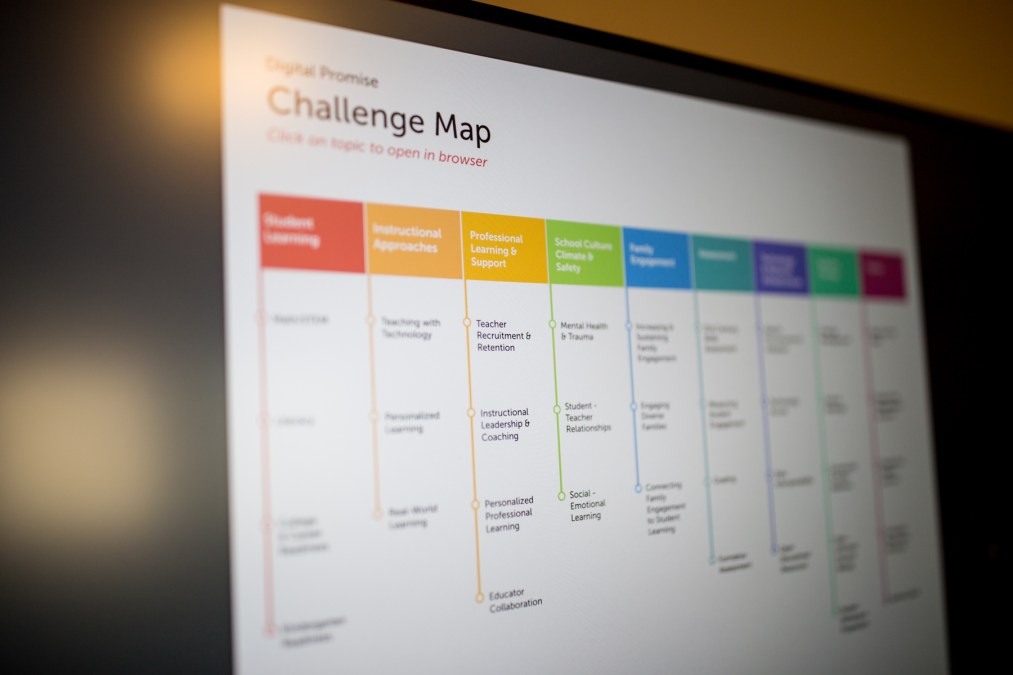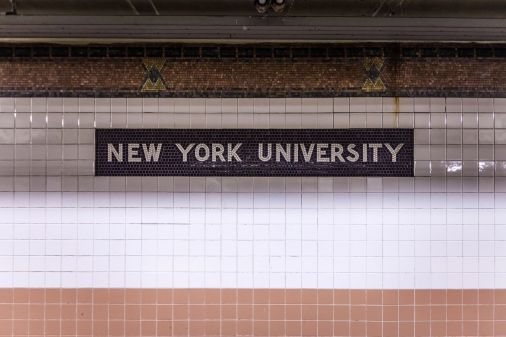‘Challenge Map’ puts school needs first in education research

Education research is meant to improve teaching and learning. But since the ideas for research are often driven by the interests of the funding sources, there’s a potential disconnect between what research schools need versus what they’re getting.
Babe Liberman, research project manager for Digital Promise, an educational nonprofit created by Congress in 2008, recently presented in a webinar hosted by edWeb.net her organization’s Challenge Map, which explores issues, ideas, and resources for K-12 challenges. During her presentation, Liberman said schools are passively waiting for the right research and opportunities to come their way. She also explained how the map can help solve this problem and how schools can develop their own maps to ensure they are putting their needs first.
Currently, education research tends to follow this pattern: funders such as nonprofits, universities, and corporations put out a request for proposals, researchers who have relevant projects apply, and then the researchers go to schools and ask educators if they’d like to participate. This puts schools in a passive role, Liberman said.
“But what if research were driven by the needs and interests of educators?” Liberman asked. “What if research and development in education were really based on what challenges [classroom educators] were facing and what solutions they really needed?”
Through the Challenge Map, Digital Promise hopes to encourage schools, publishers, researchers, and funders to move teachers and students and their needs to the top of the research process. The map features nine broad themes with 35 specific challenges. It contains background materials on each challenge and additional resources. Digital Promise’s team identified the challenges through a series of surveys, focus groups, and interviews with leaders from the League of Innovative Schools and external experts.
While the Challenge Map is a great place for schools to start conversations, Liberman also encouraged schools to create their own challenge maps that they could then share with researchers.
Schools can put together a challenge map in four steps:
- Vision and goals: Based on a school’s strategic plan, school and district leaders should first agree on major goals for teaching learning. These goals may have changed since the strategic plan was written, so it’s essential to assemble stakeholders to discuss the school’s needs. If there is no strategic plan, this is the time to develop one.
- Discussion and focus: Next is to prioritize a list of goals. Administrators often find an outside facilitator can help push aside individual agendas and ensure that these goals put the most important needs first.
- Identify root causes: School leaders need to figure out why these goals aren’t currently being met. What are the challenges — big and small — that are preventing the school from accomplishing its goals, and what is the potential role of education research?
- Action plan: Finally, the school needs a plan to address its challenges. The plan should also include steps for testing the solutions and metrics for success. It’s not until this point in the process that schools would engage education researchers.
When working with researchers, sometimes a school will want to be part of a pilot program, and other times the administrators will simply need access to existing research and ideas. Liberman reminded attendees that researchers want to share their work, and school leaders shouldn’t hesitate to contact them to find out how they can help.
About the presenter
Babe Liberman manages the Research@Work project at Digital Promise, which aims to increase the use of research in the design, development, and implementation of education programs and practices. Previously, Babe worked at the Center for Childhood Creativity, the research and advisory division of the Bay Area Discovery Museum, where she managed projects to help schools, libraries, media outlets and toy companies use the latest education and child development research findings to improve their work. She also facilitated educational programs for children and families at several museums and cultural institutions. She holds a B.A. from Yale College and an Ed.M. from the Harvard Graduate School of Education.
About the host
At Digital Promise, Sierra Gibson focuses on building districts’ and educators’ capacity to make evidence-based decisions around innovative programs and practices. In addition to conducting and supporting edtech pilot studies in collaboration with districts across the country, Sierra is also working on research projects studying technology integration to support low-resourced K-12 students and adult learners. Prior to joining Digital Promise, Sierra was an applied behavior analysis instructor and curriculum coordinator at an autism center in New York. While working on her Master’s in Education Policy and Management from Harvard Graduate School of Education, she also served as project manager and policy analyst for a nonprofit creating hybrid academic and SEL courses for students with dyslexia and ADHD. Sierra received her B.A. in government from Claremont McKenna College.
Join the community
Research and Evidence in Edtech is a free professional learning community on edWeb.net that brings together researchers, educators, and product developers to share best practices related to edtech research and evaluation.
The edWeb webinar refenced above, sponsored by Digital Promise, can be found here.




